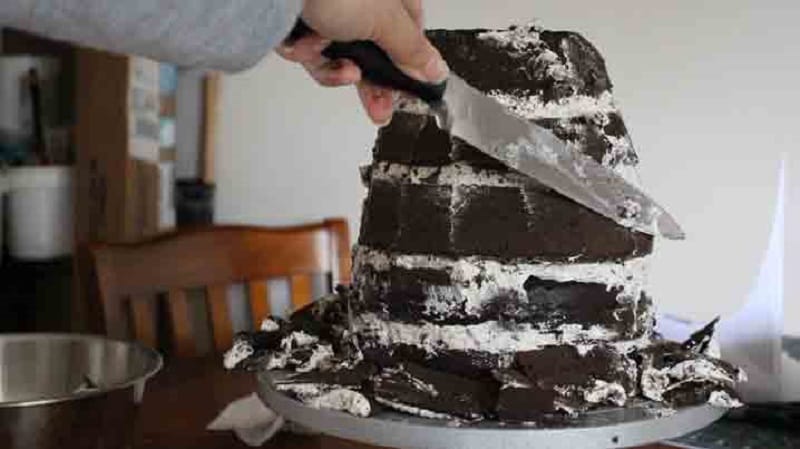Carving a cake into a unique shape is essential for any baker looking to elevate their confectionery creations. However, the process can be difficult, notably the risk of crumbling under your knife. Fear not; with the right techniques and tips, you can transform your cake into a masterpiece while keeping it intact. Here’s how.
Choose the Right Type
The foundation of a good sculpture is the material, and the same goes for carving. Not all cakes are equal in terms of their carving potential.
Dense cakes like pound cakes or madeira cakes have a tight crumb structure, making them ideal candidates for carving. On the other hand, sponge cakes and chiffon cakes, which are lighter and more airy, are prone to crumbling and, thus, might not withstand the rigors of carving.
Cooling Is Key
The temperature of the cake greatly enhances the ease of carving. A chilled cake is firmer and less likely to crumble than a cake at room temperature.
Refrigerating your cake for at least a couple of hours or, even better, overnight will make the carving process smoother. Freezing is also an option, especially for intricate designs, but ensure the cake is not frozen solid, as it might become too difficult to cut.
The Right Tools for the Job
Sharp, serrated knives are ideal for carving. Their sawing motion allows precise cuts without too much pressure on the cake, minimizing crumbles. A smaller knife grants more control for detailed work, while a long, larger knife is perfect for making big, sweeping cuts. Additionally, some bakers use dental floss for clean cuts in soft cakes.
Plan Your Cuts
Before you start, have a clear plan of what shape or design you’re aiming for. Sketching your design on paper can be a helpful guide. Begin by trimming off the crust, which tends to be drier and more prone to crumbling, then proceed with the larger cuts to establish the basic shape before moving on to the finer details. Remember, it’s easier to take more off than to add it back on, so make your initial cuts conservatively.
Crumb Coating
Once your cake is carved, applying a crumb coat is a fundamental step before the final decorating. A crumb coat is a thin layer of frosting that seals in the crumbs, ensuring the final layer of icing is clean and crumb-free. Allow the crumb coat to set, ideally in the refrigerator, before applying the final frosting or fondant.
Like any skill, cake carving improves with practice. Start with simpler designs and gradually move to more complex sculptures. Each cake is a learning opportunity, offering insights into what techniques work best for you.
Handling Mishaps
Even with the best planning and technique, mishaps can happen. Crumbs can be pressed back into place, and small errors can often be hidden under icing or decorations. Creativity is key for larger issues—sometimes, a mistake can become a unique feature of your design.
Final Thoughts
Carving a cake without crumbling is an attainable skill that requires patience, practice, and the right approach. By choosing the appropriate cake, cooling it sufficiently, using the proper tools, and planning your cuts, you can create stunning edible sculptures that impress you. Remember, each cake is a canvas, and carving is just one of the many tools in a baker’s repertoire to turn baked goods into works of art.
With these strategies in mind, your next carved cake will stand up to the knife and stand out on the table, flawlessly showcasing your baking prowess and artistic vision.

